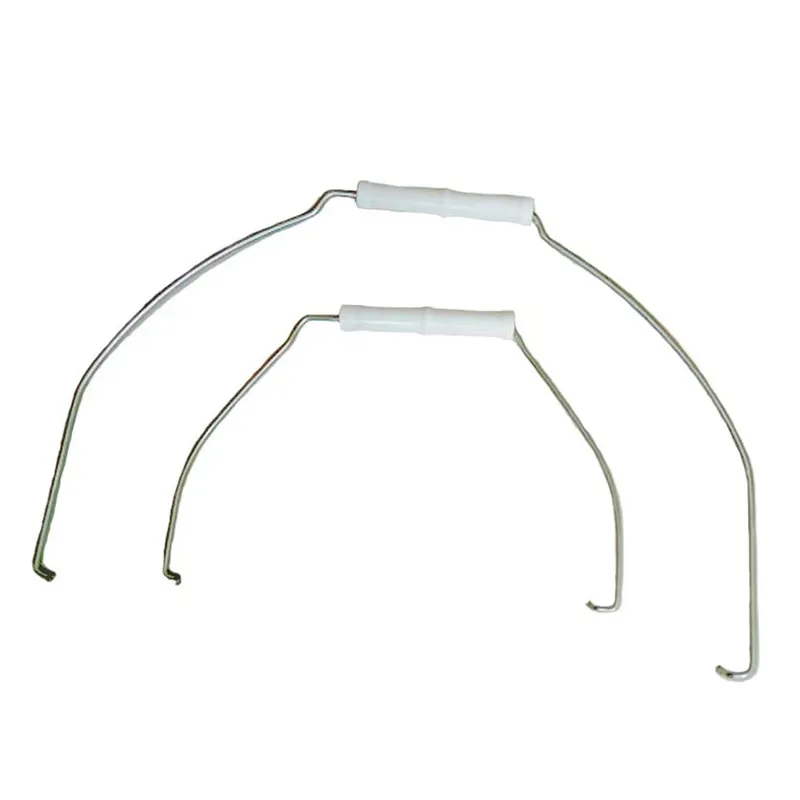-
 Phone:
Phone: -
 Email:
Email:

Calculating Tie Wire Weight per Kilogram of Rebar for Construction Projects
Understanding Tie Wire Usage per Kilogram of Rebar A Comprehensive Analysis
In construction, the integrity and durability of reinforced concrete structures are significantly influenced by the careful selection and utilization of materials. Among these materials, rebar (reinforcing bar) and tie wire play fundamental roles. Understanding the ratio of tie wire used per kilogram of rebar is essential for optimizing construction practices and ensuring structural safety.
What is Tie Wire?
Tie wire, typically made from mild steel, is a crucial component in reinforcing concrete. Its primary function is to secure rebar in place, creating a stable grid that supports the concrete as it cures and hardens. The effectiveness of rebar in providing tensile strength is maximized when the bars are properly tied together, preventing movement during the pouring of concrete. Properly tied rebar cages can significantly enhance the structural integrity and longevity of buildings, bridges, and other infrastructures.
The Importance of Measuring Tie Wire per Kilogram of Rebar
Measuring the amount of tie wire used per kilogram of rebar is critical for several reasons. First, it helps in calculating the overall cost and budgeting for projects. The cost of materials is a significant factor in construction, and optimizing the amount of tie wire can lead to substantial savings. Second, understanding this ratio can help improve the efficiency of labor during construction. Too much tie wire can lead to wastage, while too little can compromise the security of the rebar assembly.
Typical Ratios and Calculations
In practice, the amount of tie wire used can vary based on the complexity of the rebar assembly, the size of the project, and the preferences of the construction team. However, a general rule of thumb is that about 0.5% to 1% of the total weight of rebar is sufficient as tie wire. For instance, if a project utilizes 1000 kg of rebar, then approximately 5 to 10 kg of tie wire would be used.
Calculating this effectively involves a simple multiplication of the total weight of rebar by the percentage to determine the necessary amount of tie wire. This allows construction managers to plan their purchases efficiently, avoiding both shortages and excess.
Factors Influencing Tie Wire Requirements
tie wire per kg of rebar

Several factors can influence the amount of tie wire needed per kilogram of rebar. The complexity of the rebar layout is perhaps the most significant. In areas where rebar crisscrosses extensively or where there are intricate designs, more tie wire will be required to maintain stability. Likewise, larger diameters of rebar may also need more tie wire due to their weight and the increased need for support.
Environmental factors, such as wind and weather conditions, can also impact tie wire usage. In windy conditions, for example, additional tie wire may be required to secure the rebar firmly, preventing it from being dislodged during construction activities.
Best Practices for Using Tie Wire
To optimize the use of tie wire, several best practices should be adhered to
1. Standardization Establishing standard practices for how much tie wire is used per kilogram of rebar can streamline the process. This includes identifying the most common configurations used on-site.
2. Training Workers Proper training of construction staff in tying techniques can lead to more efficient use of tie wire, ensuring a secure assembly with minimum wastage.
3. Regular Assessment Regular assessment and adjustment of the tie wire-to-rebar ratio based on project requirements can lead to better material management.
4. Supplier Relationships Cultivating strong relationships with suppliers may allow for bulk purchase advantages, reducing costs on tie wire and improving project economics.
Conclusion
Understanding the usage of tie wire per kilogram of rebar is vital for efficient construction management practice. By calculating the right amounts and applying best practices, construction professionals can enhance project efficiency, reduce costs, and ensure the structural integrity and safety of reinforced concrete constructions. As the industry continues to evolve, staying informed about material usage ratios will remain a key element of successful construction project management.
-
Wire Mesh for Every Need: A Practical SolutionNewsJul.25,2025
-
Steel Fences: Durable, Secure, and Stylish OptionsNewsJul.25,2025
-
Roll Top Fencing: A Smart Solution for Safety and SecurityNewsJul.25,2025
-
Cattle Farm Fencing Solutions for Maximum SecurityNewsJul.25,2025
-
Affordable Iron Binding Wire SolutionsNewsJul.25,2025
-
Affordable Galvanized Wire SolutionsNewsJul.25,2025
-
Wire Hanger Recycling IdeasNewsJul.25,2025








